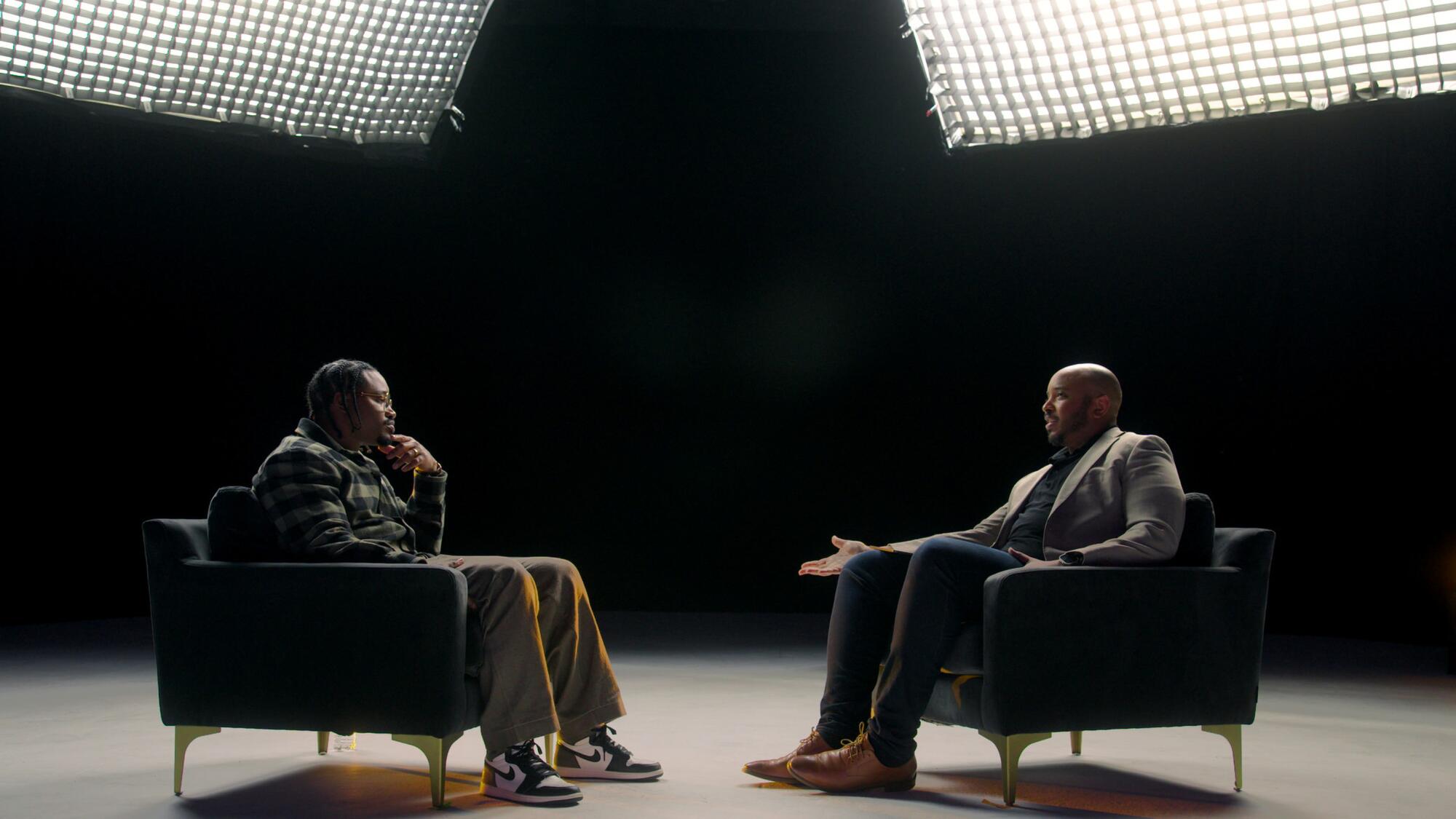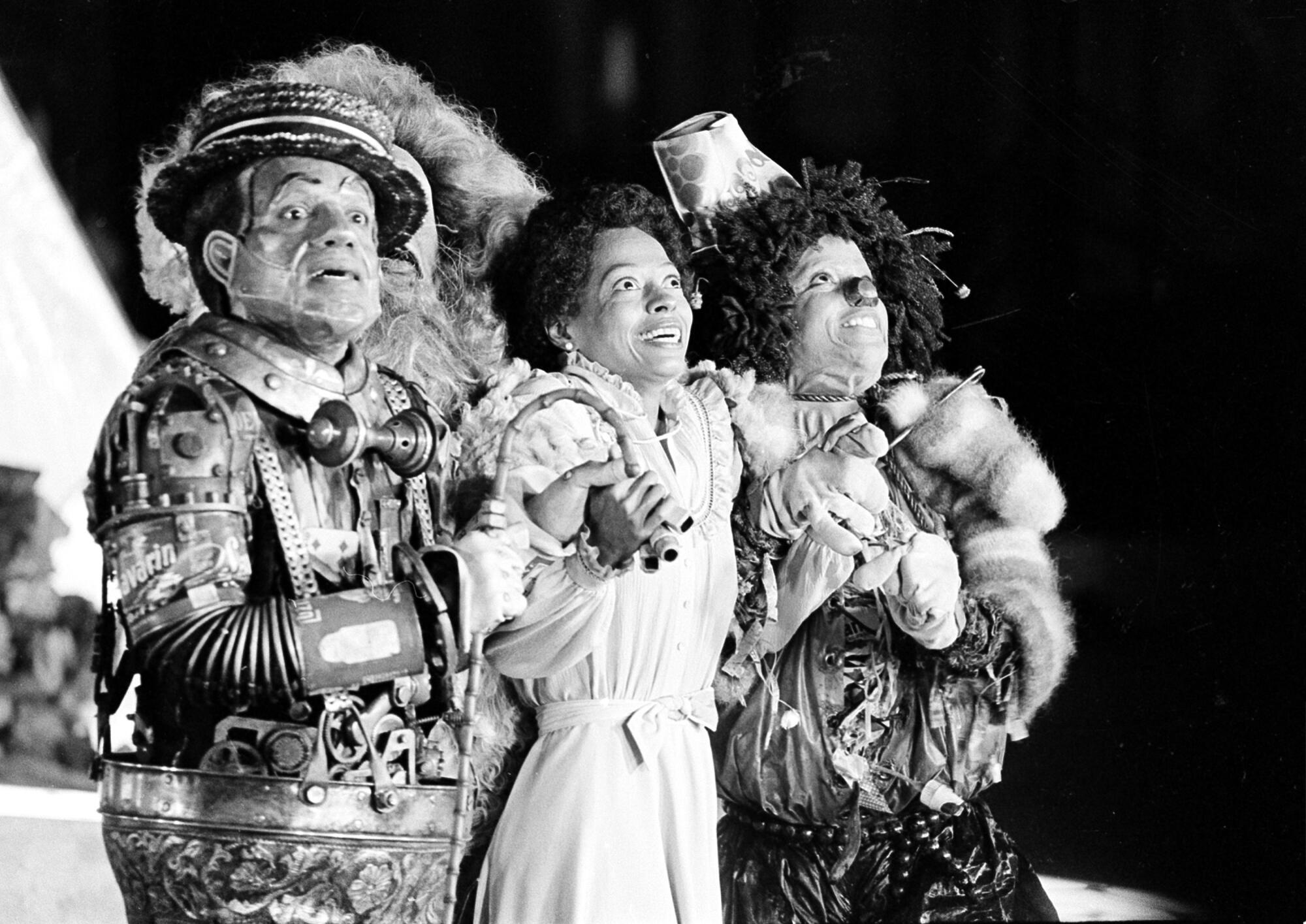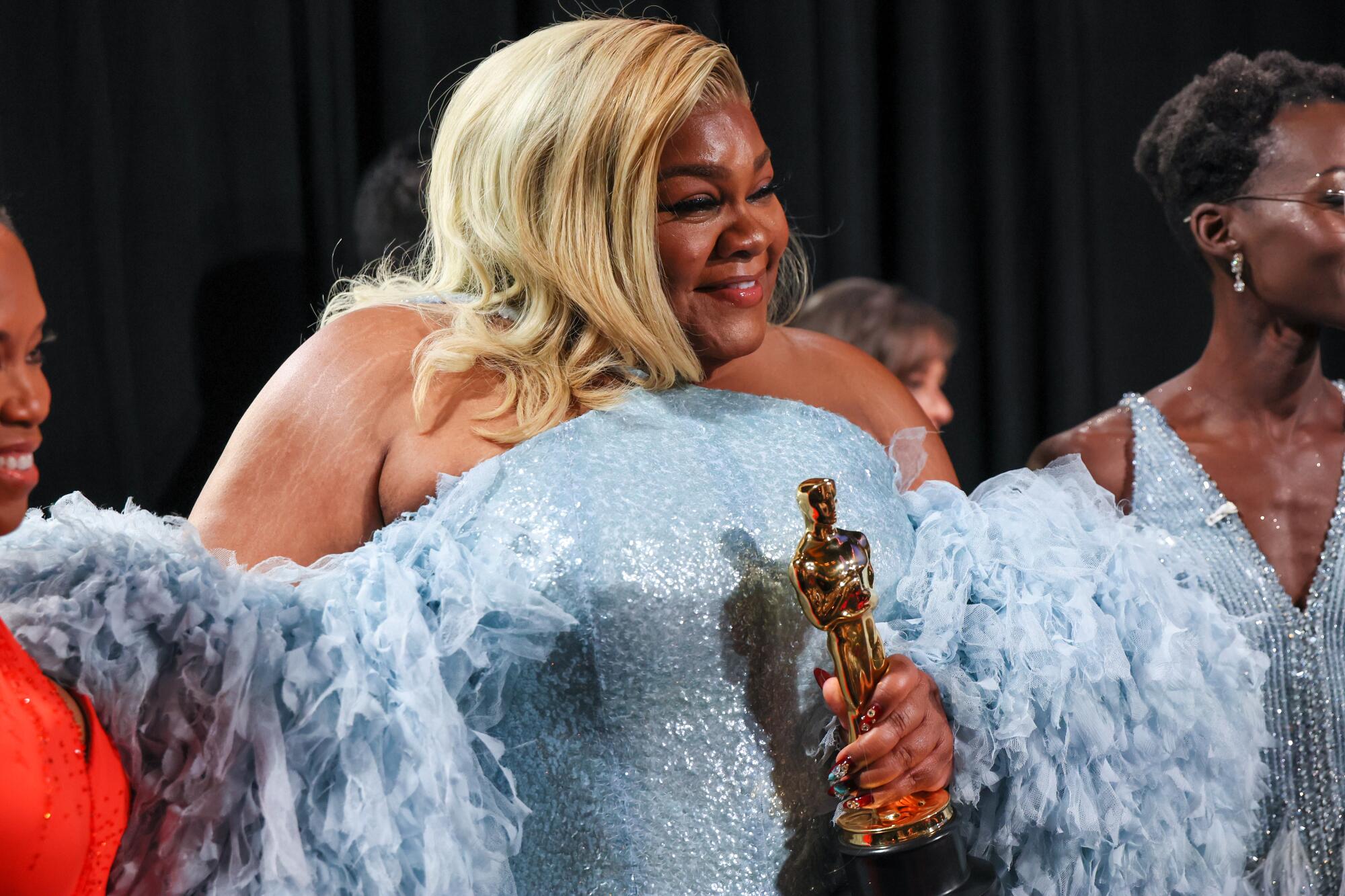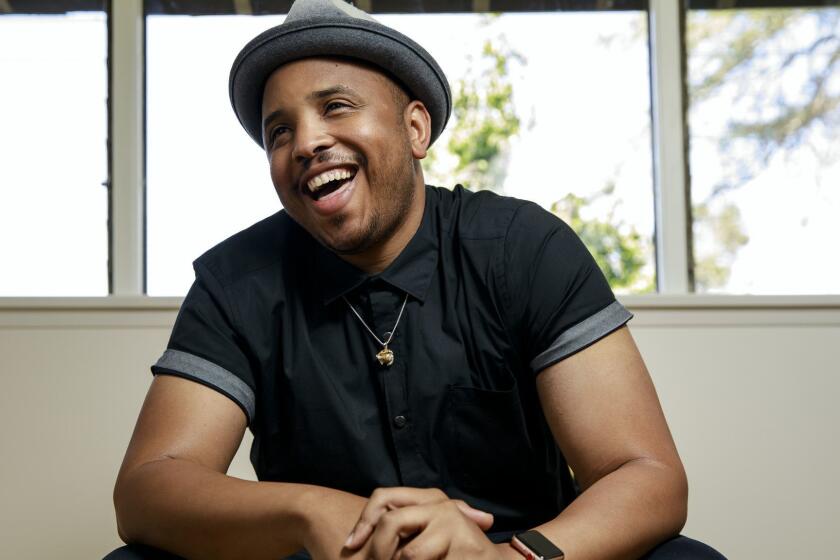
- Share via
“What is a Black movie?”
It was a question Justin Simien, who first grabbed Hollywood’s attention with his debut feature, 2014’s HBCU comedy “Dear White People,” asked a number of top-tier filmmakers. He did not get a defining answer:
“A movie typically with African Americans in leading roles.”
“A movie inspired by, rooted by, influenced and told by Black people.”
“I know one when I see one.”
Simien’s quest to answer that question is the core of “Hollywood Black,” his exploration of the history of Black cinema, highlighting the triumphs and obstacles faced by Black artists. The four-part MGM+ documentary series premiered in August and concludes Sunday with the episode “Dear Black People,” which focuses on recent successes by Black filmmakers, from “Get Out” to “Black Panther.”
Tap open Instagram: Justin Simien has a message for you.
Inspired by historian Donald Bogle’s book “Hollywood Black” and sprinkled with insights from several prominent artists — among those featured are directors Ryan Coogler (“Black Panther”) and Gina Prince-Bythewood (“The Woman King”) and actor Giancarlo Esposito — the project traces the evolution of Black film from the silent era to the present day. A priority of the project was to honor artists and movies that have been “hidden in plain sight.”

“I want everyone to rethink cinema history,” said Simien, who also directed the 2023 reboot of Disney’s “The Haunted Mansion,” in introducing the series. “Because whoever controls cinema controls history.”
Speaking from his Hollywood office, he discussed the challenges of making the documentary, the crushing impact of last year’s Hollywood labor strikes and how there can be more than two film versions of “The Color Purple.” These are edited excerpts from the conversation.
Trying to cover the history of Black cinema in four hours must have been a formidable undertaking.
This entertainment industry is built on top of popular culture that Black people are at the center of. You see it never being in our hands, but you can’t remove us completely because we are the secret sauce in every stage of its development and evolution. So the story is how these people who are so important in the creation of this art form gain and lose and regain control over it. It ends up being a political story, more than anything.
Forty years after its original release, no film has uniquely defined black culture and shaped the framework of a musical genre quite like “The Wiz.”
So much of your personal journey was influenced by “The Wiz.” So many people love that film. But it was not a critical or commercial success.
The metrics of success we are all taught on how to value certain films has to go out the window when it comes to Black stuff. It really does, particularly when it comes to something like “The Wiz,” which had a gigantic cultural impact. It’s almost like the Bible, culturally and artistically. That movie has so many accomplishments, not the least of which is bringing Michael Jackson and Quincy Jones together. I would argue it’s one of the earliest representations of ballroom culture in the famous Emerald City sequence. It is one of the most expensive movies ever made with Black people on the screen.

Another film that Black audiences have mixed feelings about is the 2023 musical version of “The Color Purple,” produced by Oprah Winfrey. Lots of fans of the 1985 film starring Whoopi Goldberg did not embrace it.
I understand it. But on the other hand, I’m glad that Blitz Bazawule, who directed the musical version, got to make his first major feature film. I have an appreciation for the fact that it is extremely rare and an experiment every time a Black filmmaker gets to make a movie. That alone is worthy of our attention. We don’t have the same aggregate of opportunities.
And on a personal level, I long for an adaptation of “The Color Purple” that appropriately elevates the queer message in that text that Alice Walker wrote. If we want to keep making “The Color Purple,” I’m OK. There’s more to be teased out of that text.
Steven Spielberg, a Broadway show and now a movie musical all have tried to capture the queer love story in Alice Walker’s novel. Here’s how they did it — and why some argue they’ve all failed.
I was very struck by the documentary’s focus on artists and films that have not gotten a lot of attention, like Charles Lane, who directed a black-and-white silent film, “Sidewalk Stories.”
The impetus for this project was seeing these movies and being both awestruck and furious, actually enraged. “Sidewalk Stories” came out in 1989. That was a big year for Black cinema — the year of [Spike Lee’s] “Do the Right Thing.” But nobody mentions this other film that happened that did not spawn its own genre of movie that way “Do the Right Thing” did. Part of the reason why is that it didn’t fit in with what was in vogue about Blackness at that time. But it is a masterpiece.
When “The Artist” won the Oscar, I remember liking that movie but was befuddled by its elevation as something important. “Sidewalk Stories” is everything that movie was in terms of using the silent movie aesthetic, particularly in the way Charles is quoting Charlie Chaplin but featuring himself as a dark-skinned Black kid on the streets of New York. He is challenging the viewer, using the same situations, but with a group of people who are Black. Why does it feel different watching the same kinds of relationships on the screen with Black people?
During the first stages of the Hollywood strikes, Black artists feared that they would be severely affected when they ended. There is a lot of pain in Hollywood right now with people being out of work, but has it been worse for Black filmmakers?
Yes. It’s harder than it’s ever been. And it has hit queer artists even harder. I rode that pendulum swing in with “Dear White People” [the film] and felt it swing back out. Then I swung back in by making “Dear White People” into a TV series. I felt it go back and forth during those years, and it is definitely swinging back. It is so difficult.

Da’Vine Joy Randolph won an Oscar this year for her performance in “The Holdovers” as Mary Lamb, the head cook at an elite New England boarding school. But her win sparked some controversy, with some observers contending that it continued the decades-long tradition of honoring Black women who play characters subservient to white people or in roles that operate in support of white characters — while honoring them for little else.
That’s an important conversation. But again she is winning an award for her performance. The bottom line is, that the role did not exist for her, for whatever reason, in the hands of a Black filmmaker. What she did with it was phenomenal. For me, that’s what we are rewarding. It’s the same with Hattie McDaniel in “Gone With the Wind.” We’re not rewarding the representation, the caricature or the stereotype. We are rewarding the person inside a pretty not-so-great system that constantly is representing Black people in a very negative way. Inside of that, she was able to do something pretty magnificent and steal the attention from the other white co-stars.
There is so much more that you couldn’t get to explore in “Hollywood Black.” Is there the possibility of more episodes?
I think it would be great. It’s up to MGM and MGM+. You could honestly go over the same periods and talk about completely different artists and still not have enough time. Or you could pick one artist per episode. If someone wants to give me some Ken Burns documentary money, then we can really go.
More to Read
The complete guide to home viewing
Get Screen Gab for everything about the TV shows and streaming movies everyone’s talking about.
You may occasionally receive promotional content from the Los Angeles Times.









